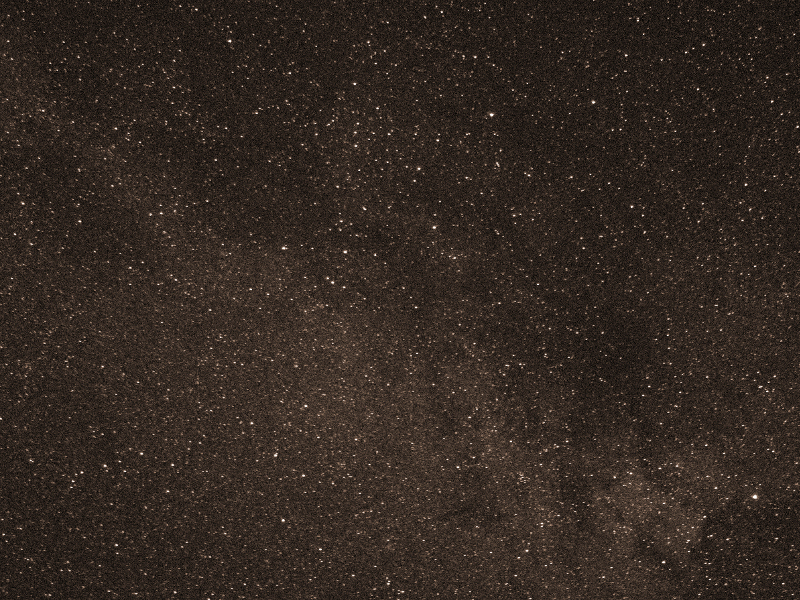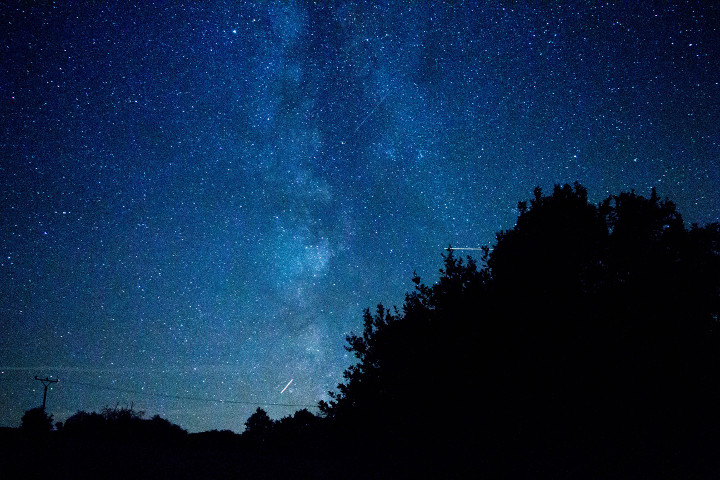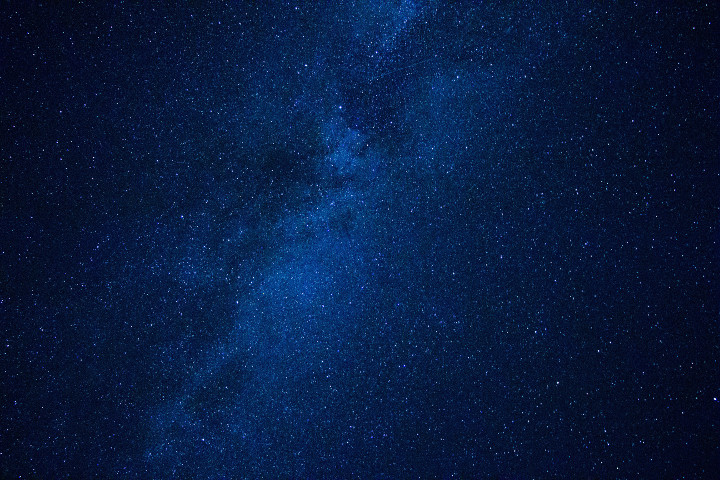Ever wondered how to take a picture of the night sky or the Milky Way? In principle as follows:
- Tripod, camera can also be placed on the ground...
- Self-timer
- Zoom as low as possible
- Manual mode of the camera
- Manual focusing - optional
- Aperture as small as possible - for example: f 3.5
- Exposure time approx. 20 sec
- ISO 1600
- Taking photos - one shot 20s
If you don't care why these values are set, when it's the best to go, how to take a picture of a galaxy or when photos show us that the Earth is rotating, then don't read on.
How does it actually work
A photo is created by capturing light via camera sensor. There is low light in the air at night and this suggests what setting we will need to choose: Aperture open to the max to let through as much light as possible to reach the sensor. Long exposure time to capture light as long as possible. High ISO to make the sensor more sensitive to light.
Footnotes: Earth is rotating...
We are standing on Earth that is rotating. Stars in the sky will not stay in the same place (one actually does, do you know which?). We need to decide if we want to have stars as lines or stars as dots and set the shutter speed accordingly. In the first case, there is no problem to choose times in minutes. In the second case we need to choose a time of 20 seconds aprox for the APS-C DSLR camera (the larger sensor camera has, the longer time we can use and vice versa). The zoom should be at min so that we don't have to reduce the time even further. Now it is clear that we can’t do without a tripod (after all we can put the camera on the ground, why not). The reason is we are not able to hold camera in the same place for a second or even half a minute. It is also recommended to use the self-timer to avoid vibrations when the shutter is pressed. DSLR offers 2 basic photo formats: raw and jpg. The first one is definitely better for our purpose because it has more quality and options for post processing, but JPG can be used as well. Sometimes I find this format unnecessarily underestimated. Each camera has an ideal ISO for the night sky. Somehow it needs to be reasonably high, but not too much (then the image quality goes down quickly due to noise). I use 1600. If someone wants to play with white balance, you can use Tungsten light, then the sky is so dark blue - a little fine art. The last thing is the focusing. If using auto try to focus some illuminated object that is around and at least a few meters away. The safest thing is to switch to manual focus, live view, point to the brightest star, zoom in on the display (be careful not with optical zoom) and rotate the focusing wheel until the star-dot is as small as possible. This is more like for DSLR camera. Live view also has the advantage that mirror will not move, so we can avoid camera shake a bit.
Where and when to go
Stars can be photographed almost always. So during the rainy afternoon it is harder :) The basic premise is a clear sky and night. Like in landscape photography, we can look for above-standard conditions. These occur for example after the passing of the cold front or when cleared up after a summer storm. In both cases, the air is perfectly clean and light from space can flow better through the atmosphere. This increased visibility can also be handy during the day when colors are beautifully saturated, but this is another story. The moon belongs to the sky - but it is a nuisance when shooting stars. Its light is intense and stars will not excel so much. It is ideal to look into the hunting calendar, when the moon is new or beyond the horizon. But the moon is not the only disturbing source of light. In the context of large cities, there is often talk of light pollution. For the photo it is intuitively worth looking for areas where this pollution is the smallest - Beskydy, Šumava in Czech... For connoisseurs and lovers of the southern sky I would recommend the Atacama desert in Chile. But do not be discouraged, even from the city you can take nice pictures of stars and all you really need for it is a night without clouds.
What to point for
The simplest answer would be: on the sky. The human eye can find an area where is the most stars. Masters of the northern sky will find a popular constellation or the Milky Way. Photos including part of the horizon, chapel or any other nearby object look also good. It results in a simple silhouette surrounded by stars.
Post processing
Is it necessary? No. But the picture can undoubtedly improved. Basically increase the exposure a little bit and also the contrast (exposure / contrast sliders), darken the sky (shades / blacks sliders) and highlight the stars (highlights / whites slider). Somehow it is in the Lightroom.
Astrophotography - next level
We just found that stars are moving in the sky or we are moving beneath them respectively, so we shouldn’t zoom, otherwise we will have lines. But if we could get a device that would slowly rotate the camera with the same speed like stars are moving? And why not increase the zoom then? Or even use a telephoto lens? Does exist something like that? Yes, it does. This device is called equatorial mount and wonders can be done with that. It is not easy to set up such a thing. When it comes to exposure time, we need hours for exposing different sections of the sky to merge it into the final image then. But the reward can be a beautiful galaxy or a star cluster.
In conclusion
For common photos of night sky ordinary camera is ok. DSLR is a good option. It's always adventure, because camera will record in twenty seconds much more than the human eye can. And there are many stars up in the space.



– J O U R N A L –
TO BE A PHOTOGRAPHER
So many nice images all over the internet. So why you should
HOW TO SHOOT WATER
How to make it blue & calm. Good light, water and sky
HOW TO CATCH A FIRE
How to catch an abstract flame. Focus on a fire to have a fun